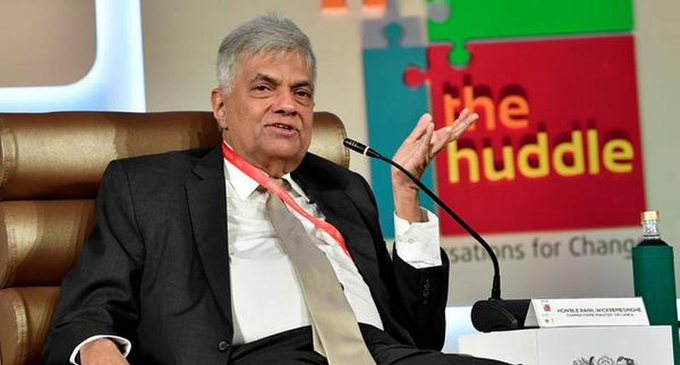(UTV | NEW DELHI) – To catch up with China’s prosperity, India needs to rejuvenate the South Asian Association for Regional Cooperation (SAARC), former Prime Minister Ranil Wickremesinghe said on Sunday (23), the Dawn reported.
Speaking at The Huddle, a 2-conclave organised by The Hindu in Bengaluru, he said a successful regional integration – both economic and security – depends on the SAARC becoming fully functional at the highest levels. Responding to a question about his country’s 99-year lease of a strategically located port to the Chinese, Wickremesinghe said, “We won’t allow our soil to be used for any action that is deemed to be hostile to India.”
The Hindu quoted him as saying that the Chinese were not bringing in their big ships to the port. “It is basically very strong economic diplomacy that they are into, and it is a question of how to respond,” Wickremesinghe said.
“India cannot respond unless it opens up, he observed. “If you want a deep pocket like China, you have to carry out these changes.” The changes he prescribed included primarily working to integrate the countries of the region. Emphasising the need for countries in the region to link up both strategically and economically, Wickremesinghe said the postponement of the Kathmandu SAARC Summit in 2017 due to heightened tensions between India and Pakistan had brought the regional grouping “to a standstill”.
Urging the neighbours to iron out their differences – including on cross-border terrorism – he said, “Otherwise you may find outsiders coming and telling [you to] sort it out, not us in South Asia.”
“SAARC is deadlocked. While the Bay of Bengal Initiative for Multi-Sectoral Technical and Economic Cooperation (BIMSTEC) is not a substitute for SAARC, it is, nevertheless a starting point for integration,” he said, in his keynote address.
Proposing an ‘Economic Integration Road Map (EIRM)’, Wickremesinghe said it was important to conceptualise a “sub-region”, consisting of the five southern states of India, and Sri Lanka, to tap the total population of 300 million people and a combined GDP of over $500 billion.

